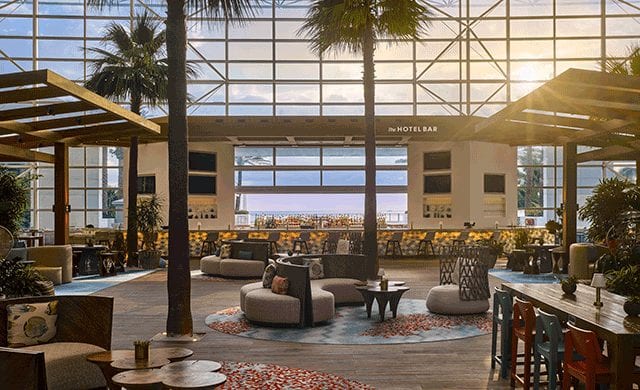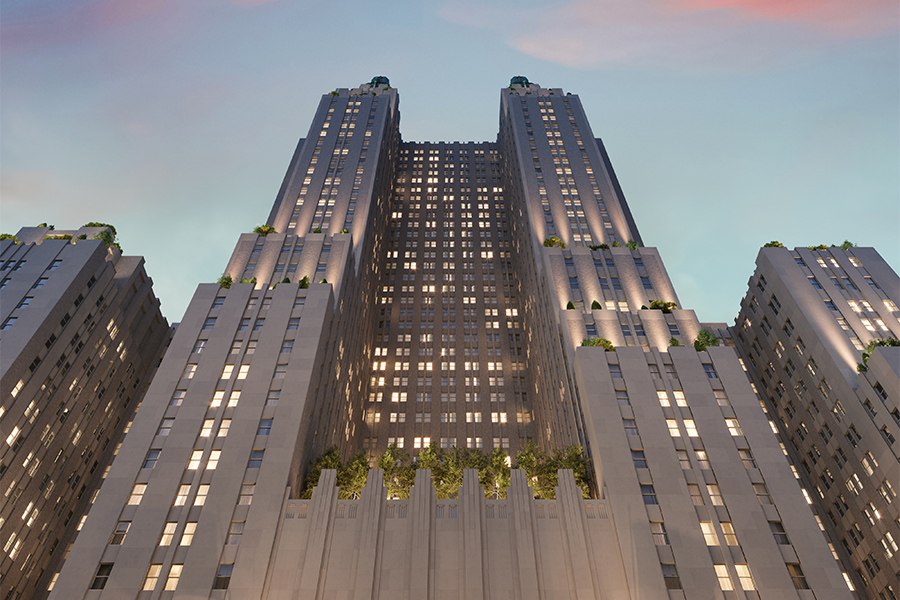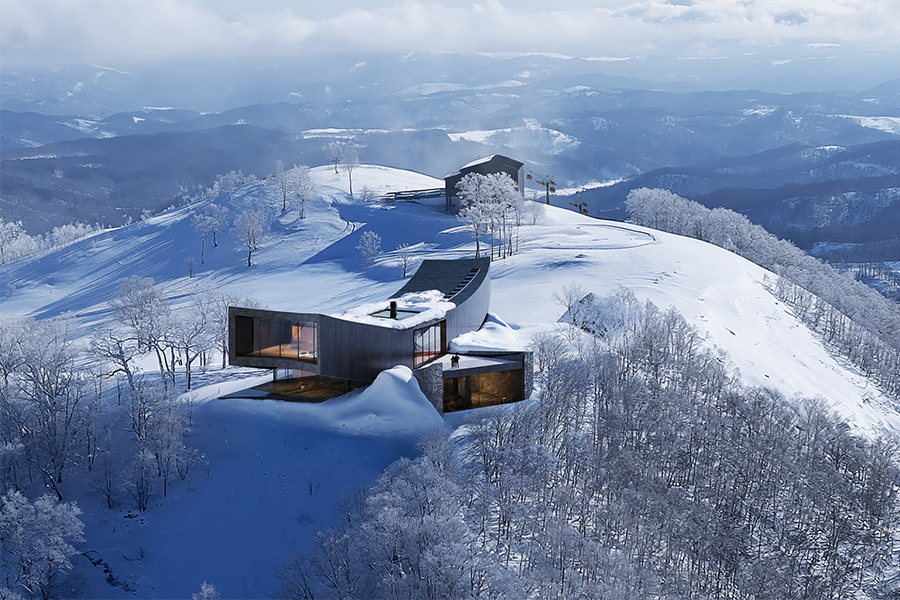During its midcentury heyday, the Diplomat Hotel in Hollywood, Florida—opened by a supermarket entrepreneur in 1958—played host to performers Lawrence Welk, Judy Garland, and Liza Minnelli. Then came the financial hardships, followed by its conversion into a Westin. Shai Zelering, managing director and head of asset management for Thayer Lodging, Brookfield Hotel Properties, however, had a more ambitious plan for the historic property. Now rechristened as the Diplomat Beach Resort (thanks to an investment of $100 million), the 1,000-room hotel is part of the Curio Collection by Hilton. Zelering turned to Boston’s Korn Design to help conceptualize the overall vision, as well as Montague, Massachusetts-based Howard Wein Hospitality to bring numerous F&B experiences to life. Korn Design principal Denise Korn says the project’s mission is less about recreating the old Diplomat than channeling its spirit. “When the property launched, everyone wanted to put it in a bucket like the Fontainebleau as one of these retro, glorious, Art Deco properties brought back to life. My feeling about the Diplomat is that its story has a lot more integrity, and only an inspiration for what was built now. It’s not a literal rebirth of what it used to be.”
Before its turn as the Westin, the Diplomat was a destination resort beloved by regulars who were sentimental about the property. Now, that beachside conviviality is simply redefined, says Korn: “Shai committed to luxury, but it’s still an approachable, fun place where you don’t want to leave.” Among the vast culinary offerings (10 to be exact) is Monkitail, Michael Schulson’s Japanese izakaya, which New York-based Gachot Studios graced with mahogany leather banquettes and glass lanterns descending from wooden beams. For Geoffrey Zakarian’s breezy Point Royal, Gachot mixed American white oak with custom cement tiles, large palms, and a bar clad in stone. Capturing the Diplomat’s connection to the Atlantic Ocean and Intracoastal Waterway is the Hotel Bar, the handiwork of Dallas-based Leo A. Daly. Kathy Chavez, senior associate and team leader, says that transforming the volume of the multistory atrium’s first floor was a challenge, yet cabanas and a lush landscape helped create an intimate “sense of indoor-outdoor ambiguity where guests meander through tropical vignettes.”
The existing lobby had the look and feel of a South Florida mall, Chavez points out. To elicit more nostalgic glamour, the team opted for a porcelain tile that calls to mind wooden boardwalks, teak, and brightly colored handmade rugs. At grab-and-go Canteen, “the feel is a mom and pop market inspired by outdoor food stands in upscale beach communities back in the ’50s and ’60s,” she says, pointing out the use of turquoise weathered wood and handpainted tiles.
Guestrooms, designed by Santa Monica, California-based HBA, also illuminate the locale. To evoke a boutique feel within a large hotel, they are divided into two design schemes, Sunrise and Sunset. The former, according to senior designer Jana Dadant, overlook the ocean and feature tactile marine rope elements, carpeting reminiscent of bubbles in the shore break, and white lacquered desks cantilevering over dressers “that free up space and create a sense of airiness,” she says. Sunset rooms alternatively have Intracoastal Waterway views and stand out for their molded wood desks, carpets mimicking seaweed, and round, color-blocked sofas. They “have a slightly moodier, sexier feel with full-height bedside mirrors, darker bronze metals, and varying shades of pink and orange,” Dadant adds. Both show off unexpected closet murals and curated locally inspired artwork. Suites are dressed with full-scale acrylic art and handtufted area rugs that recall coral and combed sand, including the Governor’s, where a white midcentury-inspired sofa pops against ash wood and aerial beach photography.



